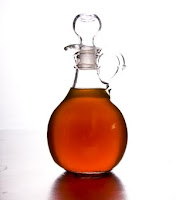Each Portuguese identification card has a digit to the right of the ID number.
Countless stories have been created around this digit, most of them myths.
Although this article is in "answers to readers" section, there isn't any particular reader asking about this using the normal channels, but it's a question often brought to the conversion.
So, what is this digit?
Jorge Buescu, degree in physics from the FCL, PhD in mathematics from the University of Warwick and Professor of Mathematics at IST (1), explain this in his book "O mistério do bilhete de identidade e outras histórias"- "The mystery of the identity and other stories".
It's important to clarify
This digit isn't the total number of people with exactly same name as you. This is a urban legend, if you don’t believe me just take a moment to think about this:
This is always a 1 digit number, i.e., the range is from 0 to 9, so, if I have 9 people exactly same name as me it's nuts to think there must be someone with 12 or 14 people with exactly same name? The control number for those people should be higher then 9.
So what is this mysterious digit?
On same book Jorge Buescu, explains that "The extra digit is (or would be, if the Portuguese authorities hadn't committed a pathetic mathematical error!) Only a control number that detects if the number of the card is correctly written", and continues to explain that the human brain can't handle with hundreds of number with many digits if they don’t have a link between them, or a pattern. That’s why this method is used, so the computer can detect errors in the numbers. What would happen if a supermarket operator makes a mistake with the barcode numbers and "... charge 200 bucks for a butter package..." it would be unthinkable.
This number, if there wasn't an error, like noted by Buescu, would be used to detect if the Identification Card Number entered in database contained errors or not.
This system of "digits detectors" is used in several other daily things such as credit cards, the ISSN for periodicals, the ISBN for the books, there are many other cases like those, where we use a control digit.
So how it works?
Buescu uses book ISBN as an example.
This number is usually in the back of the books and each title have a unique 10 digit number. For instance the ISBN for Buescu book "O mistério do bilhete de identidade e outras histórias", Edições Gradiva from collection "Ciência Aberta", is 972-662-792-3.
To check if the sequence is correct the computer applies the following formula:
x1+2x2+3x3+ … +10x10
Where ISBN number is:
x1x2x3x4x5x6x7x8x9x10
The result, explains the author, is divisible by 11.
Try yourself:
ISBN: 972-662-792-3
(1x9+2x7+3x2+4x6+5x6+6x2+7x7+8x9+9x2+10x3)/11=
(9+14+6+24+30+12+49+72+18+30)/11=
264/11=
24
Some of you, restless minds always on alert, would say: Some of the ISBN numbers have X's! Yes you are correct, some control numbers are not digit but letters, in those cases the 10 is represented by an X, that's due to the nature of used algorithm (2).
If you have a Portuguese identification card, you can try it yourself, do the same as the ISBN numbers, but read the number from right o left, like the image.
The pathetic mathematical error is that the number 10 (or the X in ISBN numbers) was replaced by a 0, so half of the people with control digit 0 should have a X.
Sources:
(1) Buescu, Jorge. "O mistério do bilhete de identidade e outras histórias", Lisboa, Gradiva- Pulicações Lda, 2nd ed 2001
(2) motivate.maths.org/content/Calculator-fun/follow-project-suggestions
Et voilá!
Don't believe everything you ear
Enjoy!
 Another cool idea to make your Christmas tree the coolest in the neighborhood.
Another cool idea to make your Christmas tree the coolest in the neighborhood. 

















































